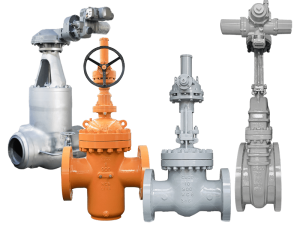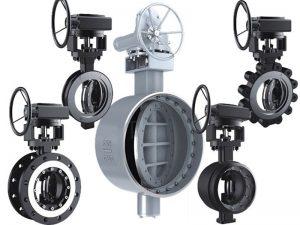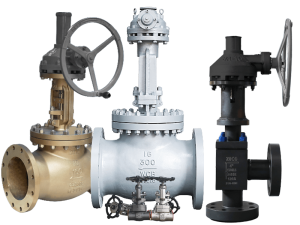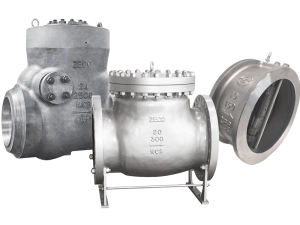Sind Sie schon einmal durch eine Industrieanlage gelaufen und haben sich gefragt, wie sie all die Flüssigkeiten kontrollieren, die durch diese riesigen Rohre fließen?
So sieht es aus: Was ist ein Durchgangsventil ist eine der häufigsten Fragen, die mir von Leuten gestellt werden, die neu im Bereich der industriellen Systeme sind. Und das aus gutem Grund.
Durchgangsventile sind überall. Von der örtlichen Wasseraufbereitungsanlage bis hin zu großen Ölraffinerien verrichten diese Arbeitspferde rund um die Uhr unauffällig ihren Dienst.
Aber hier ist die Sache...
Die meisten Menschen glauben, alle Ventile seien gleich. Das sind sie aber nicht.
Durchgangsventile haben einige einzigartige Eigenschaften, die sie für bestimmte Anwendungen perfekt machen (und für andere schlecht).
In diesem Leitfaden erkläre ich Ihnen alles, was Sie über Absperrventile wissen müssen. Am Ende werden Sie genau verstehen, wann sie eingesetzt werden, wie sie funktionieren und warum sie in industriellen Anwendungen so beliebt sind.
Klingt gut? Tauchen wir ein.
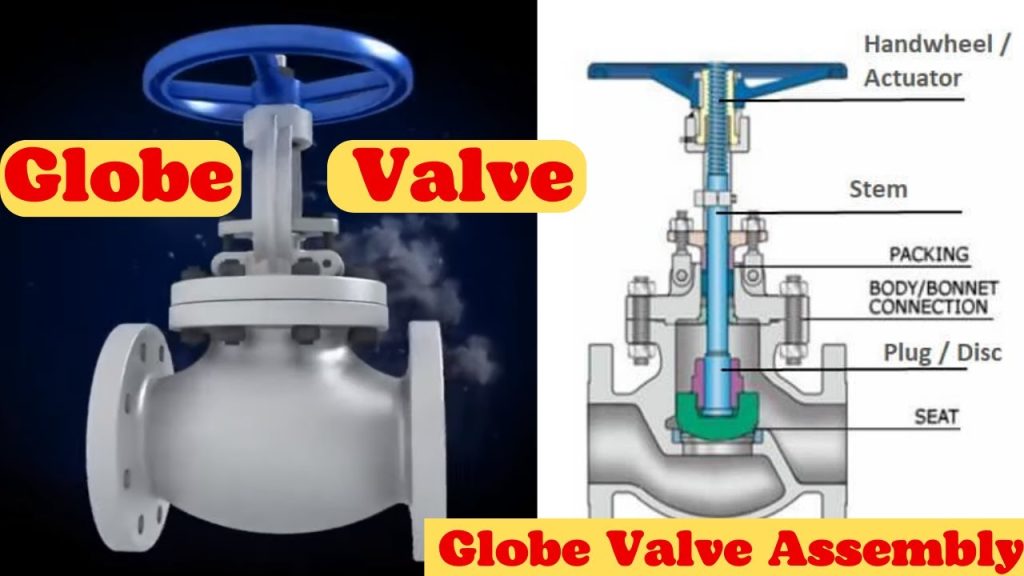
Inhaltsübersicht
- Was ist ein Durchgangsventil?
- Wie Durchgangsventile funktionieren
- Arten von Durchgangsventilen (und wann sie zu verwenden sind)
- Schlüsselkomponenten, die es möglich machen
- Wo Sie Geradsitzventile in Aktion sehen
- Das Gute, das Schlechte und die Kompromisse
- Bewährte Praktiken für Installation und Wartung
- Geradsitzventil im Vergleich zum Wettbewerb
- Dimensionierung und Auswahlkriterien
- Zukünftige Trends in der Durchgangsventiltechnologie
- Schlussfolgerung
Was ist ein Durchgangsventil?
Ein Durchgangsventil ist ein industrielles Ventil, das zur Regelung des Durchflusses von Flüssigkeiten oder Gasen in einer Rohrleitung verwendet wird. Der Name kommt von seiner runden Form, aber viele moderne Ventile sehen von außen nicht perfekt rund aus.
Wie Durchgangsventile funktionieren
Lassen Sie mich dies mit einfachen Worten erklären.
Ein Durchgangsventil arbeitet mit lineare Bewegung. Das bedeutet, dass sich die Scheibe (der Teil, der den Durchfluss steuert) gerade auf und ab bewegt - und nicht seitwärts wie bei einigen anderen Ventiltypen.
Und so geht es im Inneren weiter:
Bei der Eröffnung:
- Sie drehen das Handrad (oder der Antrieb schaltet sich ein)
- Der Schaft hebt die Scheibe vom Sitz ab
- Flüssigkeit beginnt durch das Ventil zu fließen
Beim Schließen:
- Die Scheibe bewegt sich nach unten in Richtung des Sitzes
- Der Durchflussbereich wird immer kleiner
- Vollständiges Schließen stoppt den gesamten Durchfluss
Aber jetzt wird es interessant...
Im Gegensatz zu Schieberventilen, die sich vollständig aus dem Strömungsweg herausheben, bleiben die Ventilteller mitten im Geschehen. Dadurch entsteht ein sogenannter "gewundener Strömungsweg" - im Grunde muss die Flüssigkeit mehrmals die Richtung wechseln.
Warum ist das wichtig?
Dieser gewundene Pfad ist genau das, was den Kugelhähnen ihre Superkraft verleiht: unglaubliche Drosselungskontrolle.
Sie können ein Durchgangsventil nur ein winziges Stück öffnen und erhalten eine präzise Durchflussregelung. Versuchen Sie das mit einem Absperrschieber, erhalten Sie unvorhersehbare Ergebnisse (und beschädigen wahrscheinlich das Ventil).
Das interne Fließschema
Stellen Sie sich Folgendes vor: Die Flüssigkeit tritt in das Ventil ein, trifft auf das interne Ablenkblech, wird nach oben und um die Scheibe herum gepresst und ändert dann wieder die Richtung, um auszutreten.
Es ist wie ein NASCAR-Rennen mit mehreren scharfen Kurven anstelle einer geraden Autobahn.
Dieser verschlungene Weg hat zwei wesentliche Auswirkungen:
- Ausgezeichnete Durchflusskontrolle (die gute Nachricht)
- Höherer Druckabfall (der Kompromiss, den Sie berücksichtigen müssen)
Arten von Durchgangsventilen (und wann sie zu verwenden sind)
Nicht alle Durchgangsventile sind gleich. Hier sind die wichtigsten Typen, die Sie kennenlernen werden:
Durchgangsventile Typ Z
Dies ist die häufigste Art werden Sie sehen.
Der Sitz ist horizontal, und der Schaft bewegt sich senkrecht zur Rohrleitung. So entsteht der klassische Z-förmige Fließweg, den ich bereits erwähnt habe.
Geeignet für:
- Allgemeine Drosselungsanwendungen
- Systeme, bei denen der Druckabfall nicht kritisch ist
- Budgetbewusste Projekte (sie sind in der Regel die billigste Option)
Y-Durchgangsventile
Jetzt wird es interessant.
Bei Schrägsitzventilen liegen Sitz und Spindel bei etwa 45 Grad zur Rohrachse. Dadurch wird ein stromlinienförmigerer Strömungsweg geschaffen.
Das Ergebnis?
- 10-15% geringerer Druckabfall im Vergleich zum Z-Typ
- Besser für Hochdruckanwendungen
- Kann höhere Strömungsgeschwindigkeiten bewältigen
Profi-Tipp: Wenn Sie mit Hochdruckdampf oder anderen anspruchsvollen Anwendungen zu tun haben, ist der Y-Typ in der Regel die zusätzlichen Kosten wert.
Winkel-Durchgangsventile
Diese ändern die Strömungsrichtung durch 90 Grad.
Anstatt ein separates Winkelstück zu benötigen, erfüllt das Ventil eine doppelte Aufgabe - Durchflusskontrolle UND Richtungswechsel.
Perfekt für:
- Enge Räume, in denen Sie ohnehin die Rohrrichtung ändern müssen
- Verringerung der Anzahl der Verbindungen (weniger potenzielle Leckstellen)
- Systeme mit schwankenden Durchflussbedingungen
Faltenbalggedichtete Durchgangsventile
Die Premium-Option für anspruchsvolle Anwendungen.
Diese sind mit einem Faltenbalgsystem ausgestattet, das jegliche Leckage entlang des Schafts verhindert. Null Toleranz für flüchtige Emissionen.
Unverzichtbar für:
- Gefährliche Chemikalien
- Hochreine pharmazeutische Prozesse
- Nukleare Anwendungen
- Überall dort, wo die Einhaltung von Umweltvorschriften entscheidend ist
Schlüsselkomponenten, die es möglich machen
Lassen Sie mich die Anatomie eines Durchgangsventils erläutern:
Ventilkörper
Der Hauptdruckbehälter, in dem alles untergebracht ist. Normalerweise hergestellt aus:
- Kohlenstoffstahl (am häufigsten, gut für den allgemeinen Dienst)
- Edelstahl (Korrosionsbeständigkeit)
- Gusseisen (niedrigerer Druck, Wasseranwendungen)
- Spezialisierte Legierungen (extreme Bedingungen)
Baugruppe Scheibe und Sitz
Das ist der Punkt, an dem der Zauber beginnt.
Die Scheibe ist der bewegliche Teil, der den Durchfluss steuert. Die Sitz ist der feststehende Ring, gegen den die Scheibe abdichtet.
Gängige Disc-Typen:
- Kugelscheiben: Allgemeiner Zweck, gute Abdichtung
- Nadelscheiben: Ultrapräzise Steuerung für kleine Linien
- Zusammengesetzte Scheiben: Weiche Materialien für dichte Absperrung
Vorbau und Motorhaube
Die Stengel verbindet Ihr Handrad mit der Scheibe. Die Motorhaube ist wie ein Deckel, der alles einschließt und gleichzeitig die Bewegung des Stiels ermöglicht.
Kritischer Punkt: Die Dichtung um den Schaft verhindert ein Auslaufen. Sie nutzt sich in der Regel als erstes ab, daher sollten Sie sie im Auge behalten.
Wo Sie Geradsitzventile in Aktion sehen
Durchgangsventile tauchen überall präzise auf Durchflussregelung benötigt wird. Hier sind die häufigsten Anwendungen:
Öl- und Gasindustrie
- Durchflusskontrolle in der Pipeline
- Verarbeitungseinheiten in Raffinerien
- Arbeiten am Bohrlochkopf
- Verteilung von Erdgas
Durch die Möglichkeit, den Durchfluss zu drosseln, eignen sie sich hervorragend zur Aufrechterhaltung gleichmäßiger Durchflussraten trotz Druckschwankungen.
Stromerzeugung
- Kühlwassersysteme
- Kontrolle der Dampfleitung
- Speisewasserregelung
- Kesselentlüftungen und Abflüsse
In Kraftwerken brauchen Sie felsenfeste Zuverlässigkeit. Durchgangsventile liefern diese.
Wasserversorgung
Kommunale Wasserwerke verwenden Durchgangsventile für:
- Kontrolle der Durchflussmenge
- Chemische Zuführungssysteme
- Rückspülvorgänge
- Druckregelung
HVAC-Systeme
Gebäudeautomationssysteme sind auf Durchgangsventile angewiesen:
- Steuerung von Kaltwasser
- Regulierung der Heizflüssigkeit
- Temperaturzonensteuerung
Und das Ergebnis? Überall, wo Sie es brauchen Durchflussmengen häufig anpassensind Durchgangsventile in der Regel die beste Wahl.
Das Gute, das Schlechte und die Kompromisse
Lassen Sie uns ehrlich über die Vor- und Nachteile sprechen:
Vorteile
Ausgezeichnete Drosselungskontrolle
Das ist die große Frage. Durchgangsventile können mit vorhersehbaren Durchflusseigenschaften von vollständig geschlossen bis vollständig geöffnet positioniert werden.
Zuverlässige Absperrung
Bei ordnungsgemäßer Wartung bieten sie eine dichte Abdichtung mit minimaler Leckage.
Langlebiges Design
Die robuste Konstruktion verträgt häufigen Betrieb ohne übermäßigen Verschleiß.
Wartungsfreundlich
Bei vielen Konstruktionen lassen sich Sitz und Scheibe austauschen, ohne dass die gesamte Armatur aus der Rohrleitung ausgebaut werden muss.
Nachteile
Höherer Druckabfall
Dieser verschlungene Flussweg hat seinen Preis - in der Regel 2-4 Mal den Druckabfall eines Schieberventils.
Höhere Kosten
Eine komplexere interne Konstruktion bedeutet höhere Herstellungskosten.
Nicht geeignet für Schlämme
Die innere Geometrie kann Partikel einschließen, was zu Erosion oder Verkleben führt.
Langsamerer Betrieb
Lineare Bewegung bedeutet mehr Umdrehungen, um von geschlossen nach offen zu gelangen, als bei Ventilen mit Vierteldrehung.
Bewährte Praktiken für Installation und Wartung
Ich habe in den Jahren meiner Arbeit mit diesen Ventilen Folgendes gelernt:
Tipps zur Installation
Durchflussrichtung prüfen
Die meisten Durchgangsventile sind unidirektional. Achten Sie auf den Pfeil auf dem Ventilgehäuse und bauen Sie es entsprechend ein.
Angemessene Unterstützung bereitstellen
Durchgangsventile sind schwerer als Absperrschieber. Vergewissern Sie sich, dass Ihre Rohrleitungshalterung das Gewicht tragen kann.
Zugangsraum lassen
Sie benötigen über dem Ventil Platz für die Wartung. Installieren Sie es nicht direkt unter einer Decke oder einem anderen Hindernis.
Zeitplan für die Wartung
Monatliche Schecks:
- Sichtprüfung auf undichte Stellen
- Überprüfen Sie den reibungslosen Betrieb
- Zustand der Verpackung prüfen
Jährliche Wartung:
- Gewinde der Spindel schmieren
- Prüfen Sie den Zustand von Sitz und Scheibe
- Ersetzen Sie bei Bedarf die Packung
- Test der Abschaltleistung
Profi-Tipp: Halten Sie Ersatzverpackungsmaterial bereit. Es ist der am häufigsten benötigte Wartungsartikel und eine relativ günstige Versicherung.
Geradsitzventil im Vergleich zum Wettbewerb
Hier sehen Sie, wie Durchgangsventile im Vergleich zu anderen gängigen Ventiltypen abschneiden:
Absperrschieber vs. Ventile
- Absperrschieber: Besser für Auf/Zu-Betrieb, geringerer Druckabfall
- Durchgangsventile: Bessere Drosselung, häufigerer Betrieb möglich
Kugelhähne vs. Ventile
- Kugelhähne: Schnellerer Betrieb, geringerer Druckabfall
- Durchgangsventile: Viel bessere Präzision bei der Durchflusskontrolle
Durchgangsventile vs. Absperrklappen
- Absperrklappen: Leichter, billiger für große Größen
- Durchgangsventile: Bessere Abdichtung, präzisere Kontrolle
Die Quintessenz? Wählen Sie je nach Bedarf: Ein/Aus-Regelung (Schieber/Kugel) oder Durchflussregelung (Globus).
Dimensionierung und Auswahlkriterien
Die richtige Größe des Durchgangsventils ist entscheidend. Hier ist, was zu beachten ist:
Durchflusskoeffizient (Cv)
Dies gibt an, wie viel Wasser (in GPM) bei einem Druckabfall von 1 PSI durch das Ventil fließt.
Faustformel: Die Größe sollte etwa 70-80% des maximalen Cv betragen, um zukünftige Kapazitäten zu ermöglichen.
Druck- und Temperaturwerte
Zu den Standarddruckklassen gehören:
- 150 PSI (Niederdruck)
- 300 PSI (mittlerer Druck)
- 600+ PSI (Hochdruckanwendungen)
Materialauswahl
Bedenken Sie:
- Kompatibilität mit Prozessflüssigkeiten
- Temperatur-Extreme
- Korrosionspotenzial
- Regulatorische Anforderungen
Zukünftige Trends in der Durchgangsventiltechnologie
Die Ventilindustrie entwickelt sich weiter. Hier ist, was ich im Jahr 2025 sehe:
Intelligente Ventiltechnik
Mehr Durchgangsventile sind jetzt mit:
- Eingebaute Positionsrückmeldung
- Drahtlose Überwachungsfunktionen
- Sensoren für die vorbeugende Wartung
Fortschrittliche Materialien
Neue Legierungen und Beschichtungen verlängern die Nutzungsdauer unter rauen Bedingungen.
Verbesserte Versiegelung
Bessere Elastomermischungen und Metall-Metall-Dichtungstechnologien verringern flüchtige Emissionen.
Schlussfolgerung
Also Was ist ein Absperrventil??
Es ist Ihre Lösung, wenn Sie Folgendes brauchen präzise Durchflussregelung in industriellen Anwendungen. Sicherlich erzeugen sie höhere Druckverluste als einige Alternativen, aber genau dieser gewundene Strömungsweg verleiht ihnen ihre unglaubliche Drosselungsfähigkeit.
Hier ist meine Empfehlung:
Verwenden Sie Durchgangsventile, wenn:
- Sie müssen den Durchfluss häufig anpassen
- Präzise Steuerung ist wichtiger als minimaler Druckabfall
- Zuverlässige Absperrung ist entscheidend
- Sie haben es mit Dampf, heißem Wasser oder anderen Flüssigkeiten zu tun, die von allmählichen Strömungsänderungen profitieren
Überspringen Sie sie, wenn:
- Sie brauchen nur eine einfache Ein/Aus-Kontrolle
- Druckabfall ist ein großes Problem
- Sie hantieren mit Schlämmen oder schmutzigen Flüssigkeiten
- Schnelle Bedienung ist unerlässlich
Der Schlüssel ist die Anpassung des Ventiltyps an Ihre spezifischen Anwendungsanforderungen. Wenn Sie das richtig machen, werden Ihnen die Ventile jahrzehntelang zuverlässig dienen.


